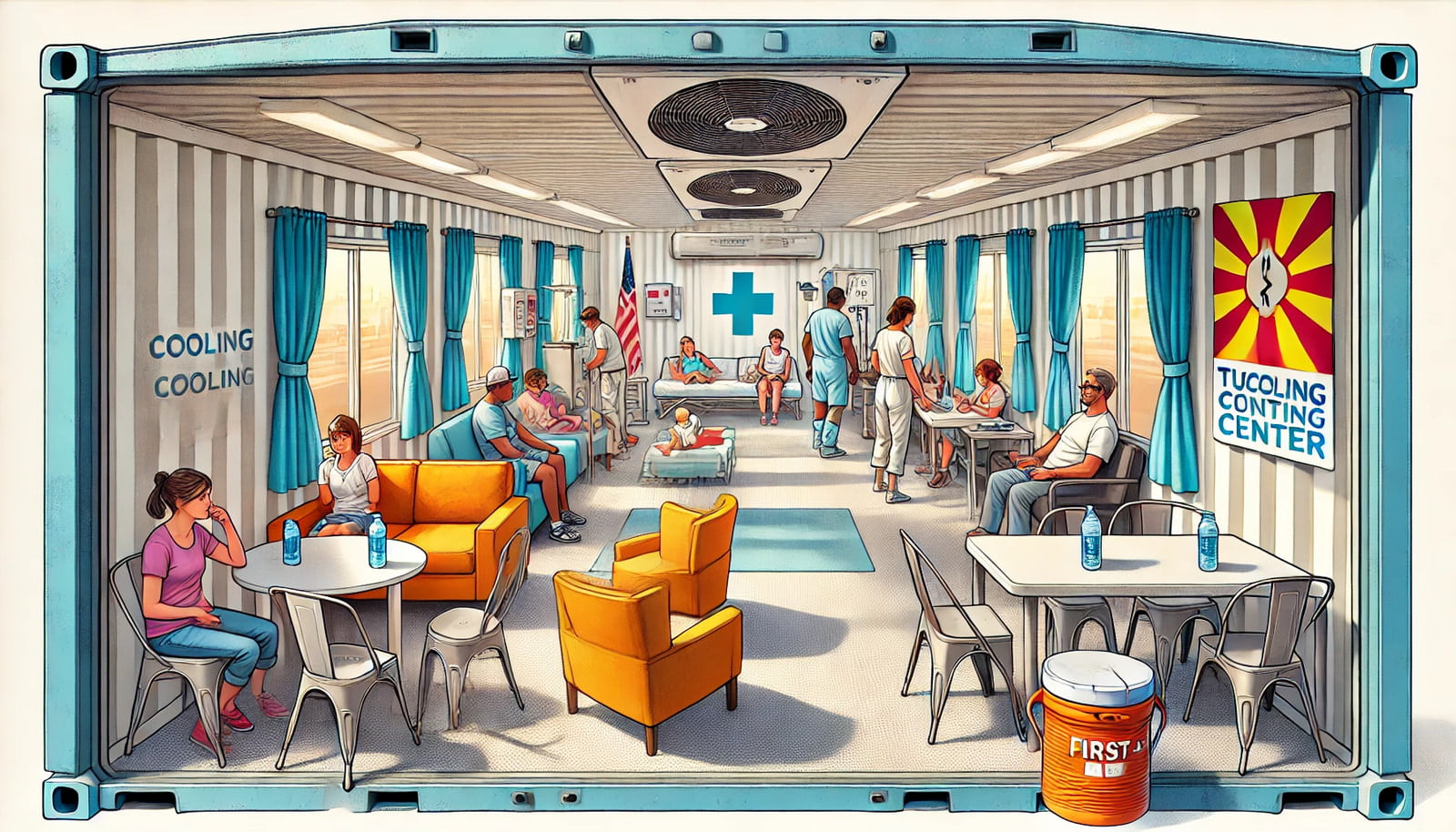
In the heart of the Sonoran Desert, Tucson, Arizona faces extreme summer temperatures that often soar well above 37 degrees Celsius (100 degrees Fahrenheit). This intense heat poses a serious risk to the city's residents, particularly those without access to adequate cooling. In an innovative response to this challenge, Tucson has embraced a creative and sustainable solution: transforming shipping containers into cooling centers. This initiative not only provides relief from the sweltering heat but also repurposes unused materials, reflecting a commitment to both community well-being and environmental sustainability.
The Concept: Repurposing Shipping Containers
Shipping containers have long been recognized for their durability, versatility, and cost-effectiveness. These steel structures, originally designed to withstand harsh oceanic conditions, are now finding new life on land. By converting them into cooling centers, Tucson is leveraging their robust design to create safe, air-conditioned spaces for the public.
Why Shipping Containers?
- Durability: Built to last, shipping containers can withstand extreme weather conditions, making them ideal for the harsh Arizona climate.
- Cost-Effectiveness: Compared to traditional construction, converting shipping containers is relatively affordable. This cost-saving aspect is crucial for budget-conscious municipalities.
- Mobility: Containers can be easily relocated to areas of need, ensuring flexibility in addressing heatwaves across different neighborhoods.
- Sustainability: Repurposing shipping containers reduces waste and supports the city's broader sustainability goals by minimizing the need for new construction materials.
The Transformation Process
Turning a shipping container into a cooling center involves several key steps, each meticulously planned to ensure the final product is both functional and inviting.
- Design and Insulation: The first step is to design the interior of the container. Insulation is crucial to keep the container cool and energy efficient. High-quality insulation materials, often coupled with reflective exterior coatings, help maintain a comfortable indoor temperature while minimizing energy consumption.
- Ventilation and Air Conditioning: Effective ventilation systems are installed to ensure proper airflow. High-efficiency air conditioning units, powered by sustainable energy sources such as solar panels, provide the necessary cooling. These units are selected based on their ability to perform optimally in high-temperature environments.
- Interior Furnishing: The interior is then furnished with comfortable seating, hydration stations, and first-aid kits. The aim is to create a welcoming environment where individuals can rest, rehydrate, and recover from the heat.
- Accessibility and Safety: Ensuring accessibility for all community members is a priority. Ramps and handrails are installed to accommodate individuals with disabilities. Safety features, such as fire extinguishers and emergency exits, are also incorporated into the design.

Impact on the Community
The introduction of cooling centers in Tucson has had a profound impact on the community, particularly for vulnerable populations such as the elderly, homeless, and those with limited access to air conditioning.
- Health Benefits: By providing a refuge from the heat, these centers reduce the risk of heat-related illnesses, including heat exhaustion and heat stroke. They also offer a space for individuals to receive medical attention if needed.
- Social Benefits: Cooling centers serve as community hubs where residents can gather, interact, and support one another. This fosters a sense of community and solidarity, particularly during periods of extreme weather.
- Environmental Benefits: The use of solar panels and energy-efficient systems aligns with Tucson's commitment to sustainability. By repurposing shipping containers, the city also reduces its environmental footprint, showcasing a model for other cities facing similar challenges.
Looking Forward
As climate change continues to drive global temperatures higher, the need for innovative solutions to manage extreme heat will only grow. Tucson's initiative to transform shipping containers into cooling centers represents a forward-thinking approach that combines practicality, sustainability, and community care.
Other cities and regions facing similar climatic challenges can look to Tucson's model as an example of how to effectively repurpose existing materials to create lifesaving resources. By continuing to innovate and adapt, communities can better protect their residents and build resilience against the increasingly frequent and severe heatwaves of the future.
Conclusion
Tucson's transformation of shipping containers into cooling centers is a testament to human ingenuity and the power of community-focused solutions. By addressing the immediate need for cooling spaces in a sustainable and cost-effective manner, the city has not only improved the quality of life for its residents but has also set a precedent for other cities to follow. As we face an era of rising temperatures, such innovative approaches will be crucial in safeguarding public health and fostering resilient, adaptable communities.


